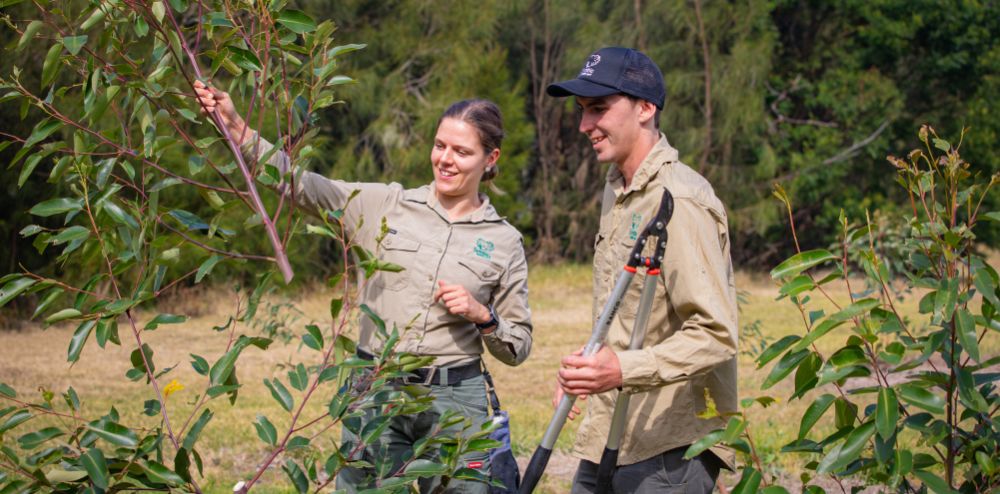
September is Save the Koala Month and we have marked the occasion with an early harvest of our Koala Food Forest within Eleebana Reserve.
Koalas are an iconic and much-loved symbol of Australia and feature prominently in Indigenous Dreamtime stories, songs and rock art. Habitat loss, traffic strikes, climate change and disease have all contributed to their population decline in recent times. Koalas are listed as Endangered in New South Wales, Queensland and the ACT.
Last October, students from Koonawarra Primary School joined Wollongong City Council and Symbio Wildlife Park staff in planting around 700 specially selected local eucalyptus trees, aka koala food, at Koonawarra's Eleebana Reserve.
More on the planting in Be-leaf us, everyone will love the city's first Koala Food Forest.
The young eucalypts were expected to take between 18 and 24 months to bear fruit, or rather leaf, to help feed Symbio's growing family of koalas.
Wollongong City Council Natural Areas Coordinator Greg Fikkers explained that perfect establishment conditions, consistent wet weather and savvy species selection had seen them mature ahead of schedule.
"Our horticulturalists worked alongside Symbio staff to select a range of eucalyptus species to suit the local environment, including those that would naturally occur here. This rings true for home gardeners too; do your homework and select native species that are suited to the local growing conditions," he said.
So, will Eleebana Crescent soon welcome marsupial residents?
"Although there are wild koala colonies to the west of the Wollongong local government area, it is unlikely that they'll be moving to Koonawarra. Think of this more like a veggie garden where we grow the food they will eat around their dinner table at Symbio."
Symbio Wildlife Park Managing Director Matt Radnidge said Eleebana would now be added to a roster of harvesting locations to support the park's growing family of 17 koalas.
"Koalas eat about half kilo of leaves a day. That means, for every new joey we're having, and we have two currently, we need to plant at least 1,000 new trees to sustain them for a year," he said.
"Without access to feed source trees such as these, we would not be able to continue or expand our breeding program which helps to secure the future of the species."
So, how do Symbio harvest the koala food?
"To ensure we sustainably harvest from our plantation sites, we typically aim to harvest every 1-2 months," said Mr Radnidge.
"To ensure its sustainable, and with this plantation only being young, we will only harvest the top third of the trees every two or three months. That's using gardening secateurs and pole cutters to remove around a ute-load of small branches."
The periodic, sectional harvests will be done on rotation to ensure an ongoing supply of leaves for the koalas throughout the year while also keeping the forest happy and healthy.
The best part? Koala food is only one of the benefits of this forest.
"The extra trees are providing more shade, helping cool the area, restoring local biodiversity and absorbing harmful emissions. Once mature, each tree will offset around 21 kilograms of carbon dioxide annually," explained Mr Fikkers.
"Wollongong City Council is committed to greening our suburbs as we know that it will help build more climate resilient communities. Trees are one of the best tools at our disposal to cool our suburbs, they also provide habitats for native flora and fauna, and help reduce greenhouse gas emissions."
The Eleebana Reserve Koala Food Forest is a joint initiative of Wollongong City Council and Symbio Wildlife Park. Wild Conservation contributed to the purchase of the trees.






